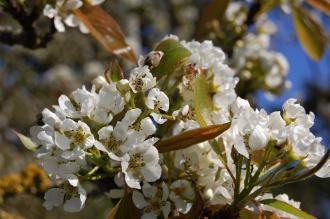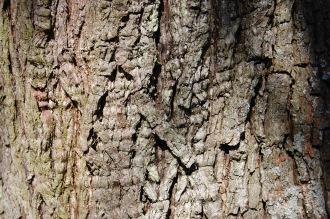
Pyrus pashia (16/03/2014, Kew Gardens, London)
Position: Full sun to light shade
Flowering period: Spring
Soil: Moist, well drained
Eventual Height: 10m
Eventual Spread: 6m
Hardiness: 5b, 6a, 6b, 7a, 7b, 8a, 8b, 9a, 9b
Family: Rosaceae
Pyrus pashia is a deciduous tree with an oval shaped crown. Its glossy dark green leaves are ovate with serrulate margins, up to 7cm long and 5cm broad. Its leaves turn yellow/ red in autumn before they fall. Its white hermaphrodite flowers are up to 3cm across. Its green fruit is an edible ovoid pome which is up to 4cm across, 5cm long and matures is autumn. Its fruit is most edible when partially decayed.

Pyrus pashia Flowers (16/03/2014, Kew Gardens, London)
Pyrus pashia, commonly known as Wild Himalayan Pear, Punjabi Pear or Indian Wild Pear, is native to south Asia, from Pakistan to Vietnam.
The etymological root of the binomial name Pyrus is the classical name for the Pear tree.Pashia is derived from the Nepalese name for this tree.
The landscape architect may find Pyrus pashia useful as an attractive spring flowering tree with interesting leaf color in autumn and edible fruit. This tree is tolerant of atmospheric pollution. It is a suitable tree for a wild life garden.

Pyrus pashia Bark (16/03/2014, Kew Gardens, London)
Ecologically, Pyrus pashia flowers are attractive to pollinating insects. The fruit of this tree is attractive to some birds and mammals.
Pyrus pashia prefers moist, fertile, well-drained soils. It tolerates most pH of soil.
Pyrus pashia requires little maintenance.

